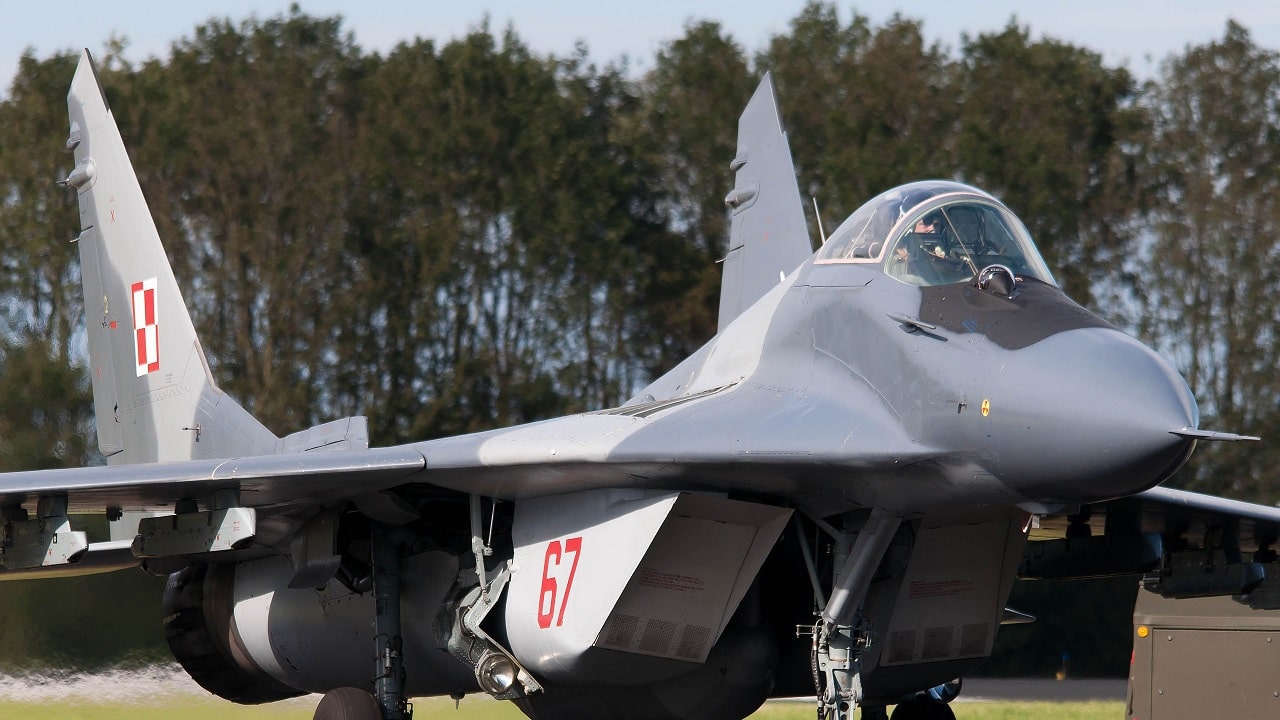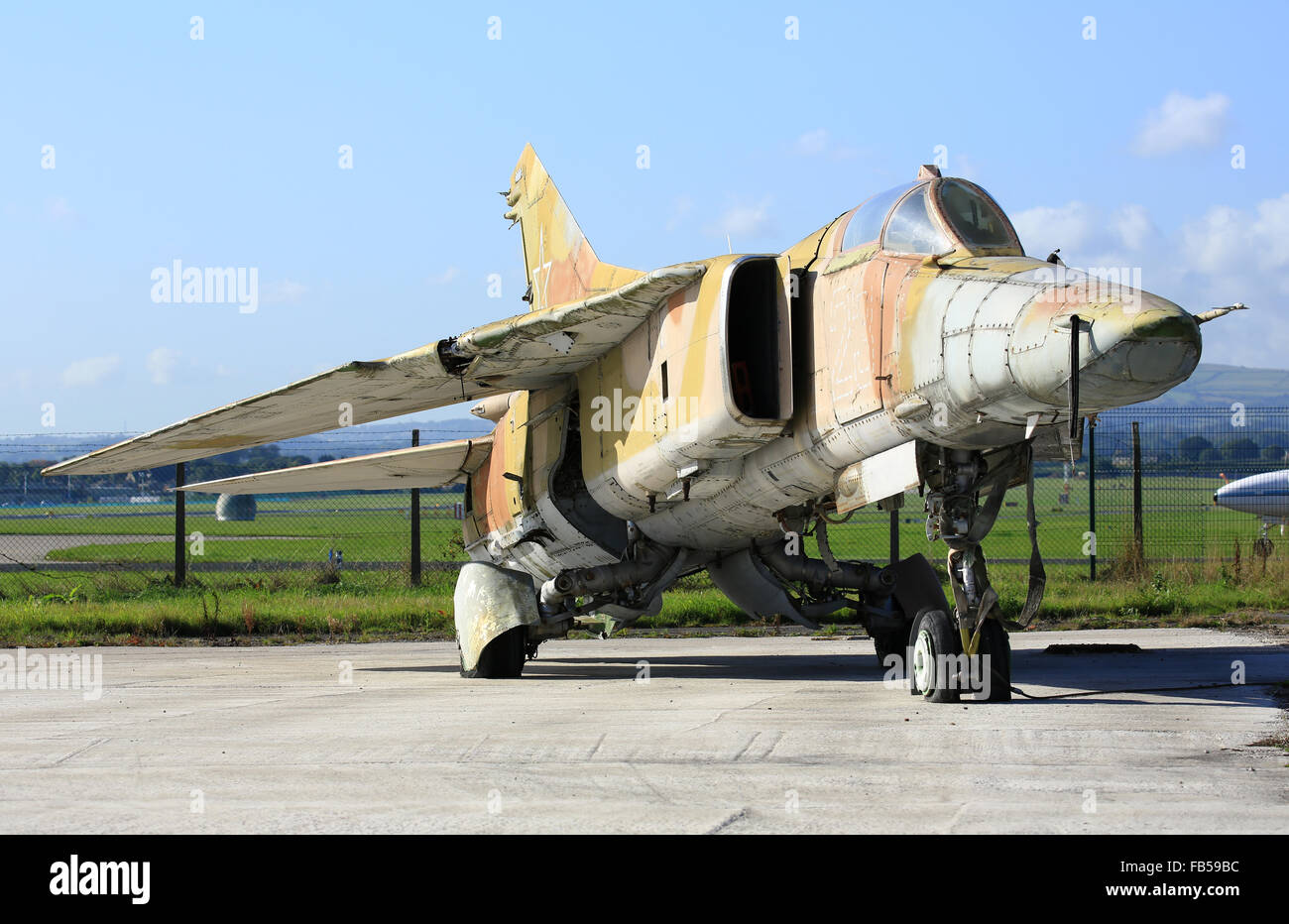Russian Mig Aircraft - This article needs additional citations for verification. Please help improve this article by adding citations from reliable sources. Insecure material can be tweaked and removed. Source find: "Mikoyan-Gurevich MiG-17" – News newspapers books scholar JSTOR (May 2015) (Learn how and when to remove this template message)
A supersonic fighter aircraft built in the Soviet Union and operated by the International Air Force since 1952. The MiG-17 was license-built in China as the Xiang J-5 and in Poland as the PZL-Mielec Lim-6. The MiG-17 is still in early use by the North Korean Air Force and in combat in the Middle East and Asia.
Russian Mig Aircraft

The MiG-17 was an advanced modification of the MiG-15 aircraft produced by the Soviet Union during the Korean War. The MiG-17 was produced late for use in this conflict and was first used in 1958 during the Second Taiwan Strait Crisis. While the MiG-17 was designed to shoot down slower American bombers, it was used by the North Vietnamese with surprising success. That's nearly a decade after pilots were first designed to fight American fighters and bombers during the Vietnam War. This was due to the fact that the MiG-17 was faster and more maneuverable than the American F-4 Phantom and F-105 Thunderchief, which were capable of speed and long-range combat, as well as the fact that the MiG-17 Was armed with guns. , the F-4 was not an early model of the Phantom.
Russia Demos New Mig 35 Fighter
Although the MiG-15bis found wings in the air war over Korea, the Mikoyan-Gurevich Design Bureau began work on its replacement in 1949 (originally the MiG-15bis45) to address problems with the MiG-15. ,
The result was one of the most successful transonic fighters introduced before true supersonic variants such as the Mikoyan–Gurevich MiG-19 and the North American F-100 Super Sabre. The design ultimately remained dominant until the 1960s, when it was not optimized for maneuvering in subsonic dogfights over Vietnam, against fast aircraft, at high speed and at short range.
While the MiG-15 used a Mach Asser to deploy the air brakes, it could not safely exceed Mach 0.92, so the MiG-17 was designed to be controlled at higher Mach numbers.
Early versions of the Rolls-Royce N, which retained the Soviet copy, were heavier than the Klimov VK-1 with similar thrust. Later, the MiG-17 would be the first Soviet fighter aircraft to use additional fuel in the exhaust of the main engine to provide additional thrust.
The Eu Could Give Mig 29 Fighter Jets To Ukraine To Fight Russia
Although the MiG-17 was similar to the MiG-15, with a new thinner, higher wingspan and speeds closer to Mach 1, the F-86 introduced a "flying" jet that further increased the aircraft's ability to control. The speed of sound, a characteristic for which the MiG aircraft was fully capable, would not be adopted until the supersonic MiG-19.
Wing sweep was 45° near the fuselage (as in the US F-100 Super Sabre) and 42° for the outer part of the wing.
A stiff wing resists the tdcy, causing the wingtips to lift and lose aerodynamic symmetry at unexpectedly high speeds and wing loads.

Other first readily visible differences were the addition of a third wing spar on each wing, the addition of a vertical fin and a longer and shorter rear fuselage, which joined the fuselage by about a meter. The MiG-17 shared the same Klimov VK-1 engine, and the rest of the construction including the rudder, landing gear and gun emplacements followed.
Russian Aircraft Corporation Mig Launches Interactive Aircraft Assembly Complex
The first prototype, designated the I-330 "SI" by the Bureau of Construction, was flown by Ivan Ivashko on January 14, 1950.
MiG-17 at the Ktral Finland Aviation Museum in Jyväskylä. The paint scheme is from 2006 and is based on an idea by Annie Lundahl of Luonetjärvi Primary School Studio.
Pilot Ivan Ivashko was killed during testing when his aircraft tore off its horizontal tail, causing it to spin and crash on March 17, 1950. In 1951, the construction and testing of the experimental series "SI-2" and additional prototypes of "SI-02" and "SI-01" were successfully completed. On 1 September 1951, the aircraft was accepted for production, and after several changes from the original MiG-15, was officially given the MiG-17 designation. With the same engine as the MiG-15, the MiG-17 has a higher top speed of 40–50 km/h, and the fighter has greater maneuverability at higher altitudes.
Serial production began in August 1951, but mass production was delayed in favor of producing more MiG-15s, so it never participated in the Korean War. It was not until October 1952 that the MiG-19 was ready for flight testing. During production, the aircraft was improved and modified several times. The MiG-17 was the primary target day fighter, armed with three guns, one Nudelman N-37 37 mm cannon and two 23 mm guns with 80 rounds each, for a total of 160 rounds. It could also act as a bomber, but its bomb load was considered lighter than other aircraft of the time, and it usually carried extra fuel instead of bombs.
Russian Mig Unveils Design Of Carrier Based 5th Gen Stealth Fighter
Although the F-86 was designed with the clear rear-view canopy required for dogfighting, the production MiG-17F received a cheaper rear-view periscope that would still be seen on Soviet fighters such as the MiG-23. By 1953, pilots received safe ejection seats with leg restraints like the safety swim curtain and Martin-Baker seats in the west. The MiG-15 suffered from a radar gun shortage, but in 1951, Soviet developers took captured F-86 Sabers from Korea and modified the optical gun and SRD-3 gun to produce the ASP-4N weapon. . SRC-3 radar. This combination would prove lethal in the skies of Vietnam against aircraft such as the F-4 Phantom, whose pilots had been abandoned as guns and radar guns were obsolete.
A second prototype version, the "SP-2" (NATO designation "Fresco A"), was a radar-equipped interceptor. Large numbers of MiG-17P ("Fresco B") air-to-air fighters were soon produced with the RP-1 Emerald radar and frontal air intake modifications.
In early 1953, the MiG-17F fighter was produced. The "F" indicated that it was equipped with the VK-1F afterburner, which replaced the rear fuel with a new convergent-divergent exhaust and fuel system. Older VK-1F engines, specially modified to equip the MIG-17F, suffered normal burn-in during long-term use due to the heat resistance of the alloys used for the outer fuselage and stator vanes. There were problems. Therefore, production aircraft from 1953 to early 1955 had a special afterburner that used a separate tank filled with 90% ethanol due to the lower combustion temperature. This gene variant has been named VK-1F(A). Later production aircraft used a conventional system with on-board fuel. Afterburner doubled the speed and improved vertical maneuverability. However, even though the aircraft was not designed to be supersonic, skilled pilots could quickly jump into a glider at supersonic speeds, although the aircraft only topped out at Mach 1, making it the most popular variant of the MiG-17. . The next mass-produced variant, the MiG-17PF ("Fresco D"), incorporated the more powerful Emerald RP-2 radar, which was still found for ground control purposes. A small series (47 aircraft) in 1956 was equipped with first generation Kaliningrad K-5 (NATO reporting name AA-1 'Kshar') air-to-air missiles with MiG-17PM standard (also known as PFU goes) was converted into A small series of MiG-17R reconnaissance aircraft were built with the VK-1F engine (after first being tested with the VK-5F engine).

Before 1958, 5,467 MiG-17s, 1,685 MiG-17Fs, 225 MiG-17Ps and 668 MiG-17PFs were built in the USSR. More than 2,600 were built under license in Poland and China.
Russian Mig 29 And Su 27 Fighter Jets Flying In Front Of Decoy Countermeasure Flares Over The Red Square In Moscow, Russia Stock Photo
In 1955, Poland received a license to manufacture the MiG-17. The MiG-17F was produced by the WSK-Mielec plant under the name Lim-5 (abbreviation of licenti myśliwiec - licensed fighter). The first LIM-5 was delivered on November 28, 1956, and 477 were built in the 1960s. In addition to Poland, some were exported to Bulgaria, where they were designated the MiG-17F.
An unknown number were built as a reconnaissance version of the LIM-5R equipped with the AFA-39 camera. 129 MiG-17PF interceptors were produced as LIM-5P in 1959–1960. WSK-Mielec also developed several Polish launcher variants based on the MiG-17: LIM-5M, produced in 1960; Lim-6bis, manufactured since 1963 (170 aircraft in total). Additionally, in the 1970s some LIM-5Ps were converted to LIM-6M attack aircraft, while LIM-5, LIM-6bis and LIM-5P aircraft were relegated to LIM-6R, LIM-6bis R and LIM-6MR roles. was modified for
In the People's Republic of China (PRC), the initial MiG-17F was assembled from parts in 1956, with license production starting in 1957 in Shang. The Chinese-made version is called the Shang Jh-5 (for domestic use) or the F-5 (for export). In addition the MiG-17PF was produced there as the J-5A (F-5A for export). A total of 767 of these single-seater variants were made.
This subsonic (Mach .93) fighter was effective against slower (Mach .6–.8), heavy-lift American fighter-bombers as well as American strategic bombers.
Slovakia May Consider Giving Ukraine Russian Built Warplanes
Russian aircraft, famous russian aircraft, russian aircraft models, mig russian, russian aircraft for sale, russian aircraft manufacturers, mig russian aircraft corporation, mig 29 aircraft, modern russian fighter aircraft mig 35, russian aircraft clock, mig russian aircraft, mig aircraft
0 Comments